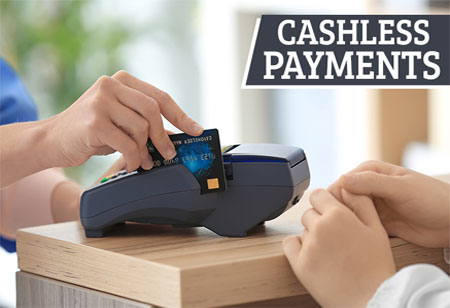THANK YOU FOR SUBSCRIBING

By
Banking CIO Outlook | Friday, July 17, 2020
Stay ahead of the industry with exclusive feature stories on the top companies, expert insights and the latest news delivered straight to your inbox. Subscribe today.
Banks have progressed a lot since card payment was first introduced. They have now introduced cards with near field communication (NFC) technology, which allows customers to tap or wave their card near a card reader to make purchases.
Fremont, CA: The finance sector has undergone multiple changes over the last few years. Payment methods and trends, in particular, have undergone significant changes. As the new decade dawns upon the finance sector, there is no doubt there are a lot more substantial changes to come. The payments sector has taken a customer-centric approach, and the focus is now on making payments as easy and convenient as possible.
Declining Cash Payments
Studies have shown that cash payment across the globe has declined from 89 percent to 77 percent. In the U.S. Debit cards have overtaken cash payments with 28 percent market share compared to cash’s 26 percent. Also, analysts predict that cash payments will continue to decline over the next few years due to the growth of digital commerce and the emergence of new payment options.
Contactless Payments
Banks have progressed a lot since card payment was first introduced. They have now introduced cards with near field communication (NFC) technology, which allows customers to tap or wave their card near a card reader to make purchases. Customers can now experience the easiness and convenience of just tapping to pay. However, contactless payment goes beyond cards. Merchants are now accepting payment via mobile wallets like Apple Pay, Google Pay, and Samsung Pay.
No Signatures
In 2018, card brands removed the mandatory stipulation of signatures on invoices for credit card transactions. With advancements in payment security technology, such as EMV, tokenization, and artificial intelligence (AI) for payment data monitoring, the process of authorizing transactions with a signature has become virtually obsolete.
Biometrics
Biometric security is widely used on phones. From unlocking smartphones to authorizing mobile banking transactions, everything can be controlled using fingerprints. This makes payments not just more comfortable but also enhances security and improves accuracy.
Invisible Payments
Internet of things (IoT) technology has the potential to create seamless payment processes. With the help of RFID technology, customers can walk into stores and make purchases like never before. They need to walk into the store and pick what they need. RFID sensors will detect all the items selected and keep the bill ready when the customer is done.
THANK YOU FOR SUBSCRIBING
Be first to read the latest tech news, Industry Leader's Insights, and CIO interviews of medium and large enterprises exclusively from Banking CIO Outlook
I agree We use cookies on this website to enhance your user experience. By clicking any link on this page you are giving your consent for us to set cookies. More info



